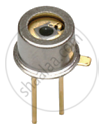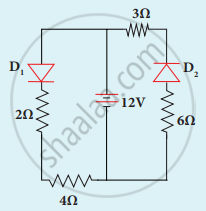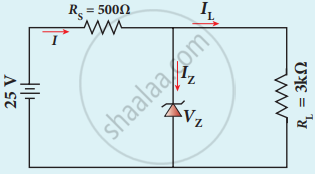Advertisements
Advertisements
प्रश्न
Write notes on the photodiode.
उत्तर

Circuit symbol

Schematic view of photodiode
- Photodiode is a p-n junction diode that converts an optical signal into electric current.
- It works in reverse bias.
- It consists of an F p-n junction semiconductor made of photosensitive material kept safely inside a plastic case.
- It has a small transparent window to allow light.
- When photon (hv) strikes depletion region of diode some valence band electrons elevated to conduction band. In turn, holes are developed in the valence band. This creates electron-hole pair.
- Amount of electron-hole pairs generated depends on the intensity of light.
- These electrons and holes swept across the junction by the electric field. Thus holes move to the n side, electrons to the p side.
- When an external circuit is made, electrons flow through an external circuit and constitute the photocurrent.
Applications:
Alarm system, count items in the conveyer belt, photoconductors, CD players, smoke detectors, detectors for computed tomography, etc.
APPEARS IN
संबंधित प्रश्न
The barrier potential of a silicon diode is approximately, ____________.
In an unbiased p-n junction, the majority of charge carriers (that is, holes) in the p-region diffuse into the n-region because of
If a positive half-wave rectified voltage is fed to a load resistor, for which part of a cycle there will be current flow through the load?
Which one of the following represents forward bias diode?
Mention the types of biasing.
Explain the construction and working of a full-wave rectifier.
What is an LED? Give the principle of its operation with a diagram.
Explain the working principle of a solar cell. Mention its applications.
Determine the current flowing through 3 Ω and 4 Ω resistors of the circuit given below. Assume that diodes D1 and D2 are ideal diodes.

In the given figure of a voltage regulator, a Zener diode of breakdown voltage 10 V is employed. Determine the current through the load resistance, the total current and the current through the diode. Use diode approximation.

